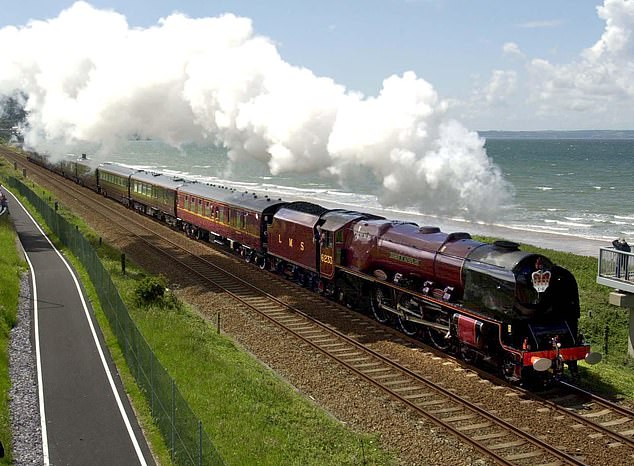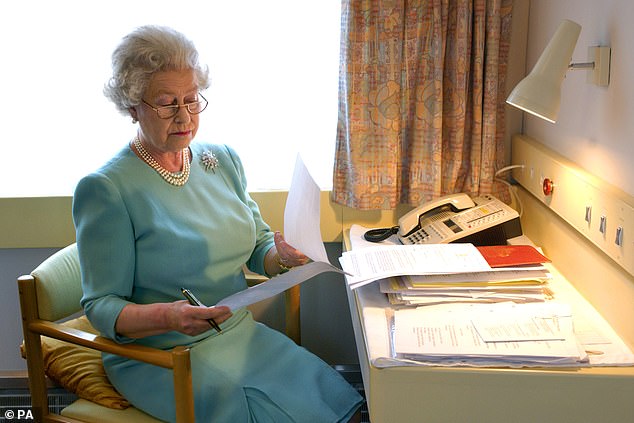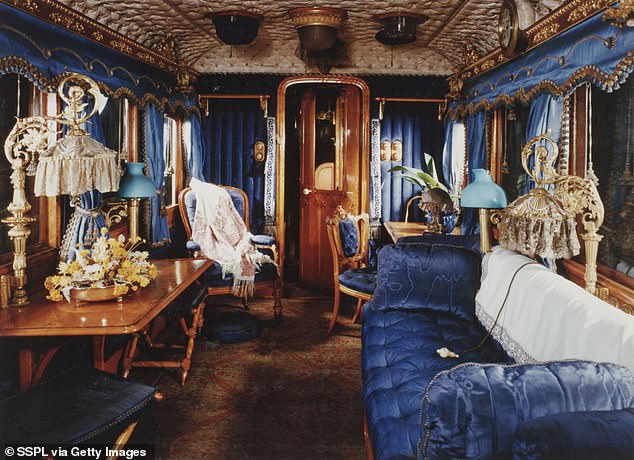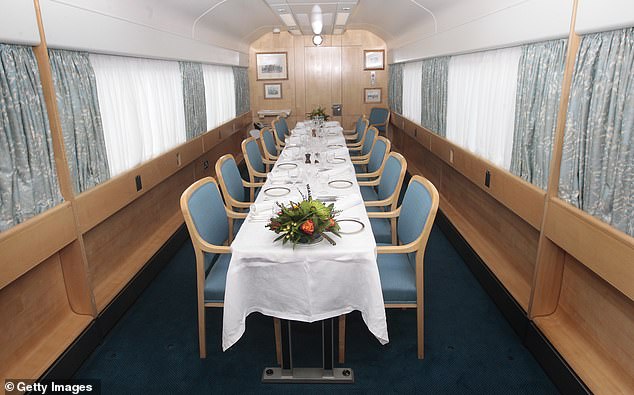The royal train has been derailed after almost 125 years – finally falling foul of cost-cutting measures.
King Charles has decided the £1.5million annual running costs are unjustifiable in the current economic climate, and it will be decommissioned in 2027.
In 2024/25 it was used just twice – at an average cost of £38,984 a time.
Royal aides were also concerned by the spiralling costs of the liveried locomotive, so beloved by Queen Elizabeth, that hauls the nine-carriage train – seven for the royals and two to provide support. It needs an imminent overhaul, and even getting parts is proving difficult and costly.
Sources said Charles had ‘fond memories’ of the royal train but that he had to go with the figures.
Officials will begin to discuss its future in the run-up to its decommissioning, which may include ensuring it is on permanent public display, much in the way of the former Royal Yacht Britannia, which is now housed in Leith, Edinburgh.
The news comes as Buckingham Palace publishes its annual financial statement, the Sovereign Grant Report, for the year 2024-25, detailing how much the monarchy gets from the public purse and what it spends it on.
Money received by the King remained level at £86.3million for the fourth consecutive year, with supplementary income up to £21.5million – driven by a record year for visitors to Buckingham Palace.

The royal train (above) has been derailed after almost 125 years – finally falling foul of cost-cutting measures

Royal aides were also concerned by the spiralling costs of the liveried locomotive, so beloved by Queen Elizabeth (above, working on the train in 2002)

The train had day and night saloons for the Queen and Prince Albert, as well as carriages for other members of the Royal family and dignitaries (above, Victoria’s Saloon)
It is the first year the core Sovereign Grant has been calculated based on 12 per cent of the Crown Estate, instead of the previous 25 per cent. Two years ago King Charles decided the amount he is entitled to should be halved because of a huge boost to his coffers from offshore wind farms owned by the Crown.
He asked for it to be handed back to the public purse and be directed for the wider public good.
However the report also includes details of a near £100million ‘temporary uplift’ in the Sovereign Grant over the next two years from this pot of money to fund the final phase of Buckingham Palace’s refurbishment.
The ten-year, £369million project was deemed necessary to make the crumbling palace fit for purpose – parts of which haven’t been touched since before the Second World War.
It will see the monarch’s annual income of £86.3million increased to £132.1million in 2025/26 and 2026/27, before reverting to normal once the building works have been completed.
The report reveals that more than 93,000 guests were welcomed through the doors at Buckingham Palace, Windsor Castle and other royal residences during the last financial year, across 828 events.

The table would be set in the dining room (as above) when the train was in use
Despite being treated for cancer, 76-year-old Charles and Queen Camilla, 77, undertook 604 official engagements between them.
They also responded to 123,000 items of correspondence. However, the number of people applying for ‘milestone’ messages – such as those reaching their 100th birthday – has dropped as the post-war baby boom generation dwindles.
One of the King’s official state Bentleys has been converted to run on bio-fuel, with the second scheduled for transition later this year. The Royal Family also now have two new helicopters.
Amid a host of building works, the Palace spent £605,000 on redeveloping the rose bed at Windsor Castle to ‘enhance public access’.
The royals’ travel costs increased marginally on the previous year by £100,000, to £2.7million, including £400,000 on charter and scheduled flights for the King and Queen’s high-profile visit to Australia and the Commonwealth heads of government meeting in Samoa last autumn.
Almost £80,000 was spent on four private jet trips for Princess Anne to watch matches in Edinburgh in her role as patron of the Scottish Rugby Union.
Aides also confirmed yesterday that Frogmore Cottage, Harry and Meghan’s former Windsor home, remains empty three years after they left and there are ‘no immediate plans’ to have another tenant.
It has been widely reported that the King is keen to downsize his beleaguered brother, Prince Andrew, into the property.
However, it is the end of the line for the royal train that will capture most attention.
Queen Victoria became the first reigning monarch to travel by rail, in 1842, and in 1869 commissioned a pair of coaches. King Edward VII ordered an entirely new royal train in 1902, which was adapted by subsequent monarchs, including George V who installed the world’s first bath on a train. The most recent carriages date back to 1986.
Keeper of the Privy Purse, James Chalmers, said while the train ‘has been a part of national life for decades, loved and cared for by all involved, in moving forwards we must not be bound by the past’.
He added: ‘The time has come to bid the fondest of farewells.’











